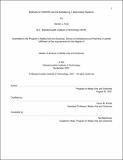Methods for CRISPR Cas12a Multiplexing in Mammalian Systems
Author(s)
Avila, Mariah J.
DownloadThesis PDF (5.540Mb)
Advisor
Esvelt, Kevin M.
Terms of use
Metadata
Show full item recordAbstract
Clustered regularly interspaced short palindromic repeat (CRISPR) proteins have been found in many bacterial species, serving as a defense mechanism to defend the cell from bacteriophage invasion. These proteins are guided to cleave a specific nucleic acid sequence through the binding of a crRNA hairpin. In recent years, these proteins have been adapted for a number of gene editing applications. The fusion of additional proteins of interest to dead nuclease (non-cutting) mutants of CRISPR proteins such as Cas9 and Cas12a have allowed for a wide range of gene editing activities, including gene activation (CRISPRa). However, only a small number of genes can currently be targeted at one time, due to a limit on the number of gRNAs that can be successfully placed into a guide array. This is primarily due to the difficulty of synthesizing arrays with a large number of repetitive sequences such as are required in the crRNA. In addition, the repetitive regions of crRNA pose the danger of homologous recombination in vivo. Through the use of mutant library screening and novel mammalian tissue culture assays designed to interrogate the RNA processing and DNA binding abilities of the CRISPR Type V Cas12a mutant crRNAs, we show methods to improve the multiplexing ability of Cas12a. Using these methods, we constructed and utilized 32-guide arrays for successful activation of endogenous genes using CRISPRa, demonstrating the functionality of a larger LbCas12a array than has been previously published. These guides and methods enable simultaneous activation of endogenous genes for basic science applications, as well as large arrays for use in viral defense systems.
Date issued
2021-09Department
Program in Media Arts and Sciences (Massachusetts Institute of Technology)Publisher
Massachusetts Institute of Technology